Plumbing for the bathroom: varieties, selection, location

A couple of decades ago, plumbing in the house performed an exclusively practical function and no one had the idea that, for example, a bathroom bowl could be angular or curly, and also have some kind of color scheme in addition to white. Nowadays, plumbing is part of the overall design of an apartment, so it is impossible to imagine a comfortable home without a stylish and comfortable bathroom.
Plumbing fixtures offered on the market differ in their functionality, shape and color. In order to choose the right equipment for your bathroom, you should pay attention to useful recommendations.






Views
Conventionally, all existing bathroom fixtures are divided into two main categories.
- Outdoor equipment. This is a standard equipment that is in high demand from users. Those owners of residential premises who are the happy owners of spacious bathrooms, where you can always implement the most original design ideas, are in the most advantageous position.
- Built-in appliances. This is the optimal solution for small areas. Such plumbing allows you to equip a bathroom, taking into account all the basic principles of ergonomics, saves free space, frees up space, brings lightness and lightness to the hygienic room.


In the vast majority of cases, the following types of plumbing are installed in the bathroom:
- bath;
- shower stall;
- sink;
- toilet bowl;
- additional accessories.
If the footage permits, it makes sense to add an additional bidet, as well as a urinal.



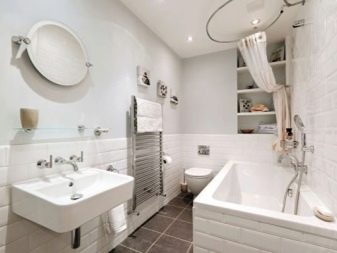
The bathtub is considered the most popular and most frequently installed technique. Typical rectangular designs are in greatest demand. In recent years, corner models have appeared on the market, which are the best choice for small spaces.

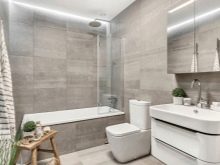

Shower cabins appeared on the market not so long ago, but have already taken pride of place in the bathrooms of our compatriots. The main advantages of cabins - small size and ergonomics. In addition, when using booths, very tangible water savings are achieved. The design will be the best choice for those who cannot afford to take a bath for a long time.


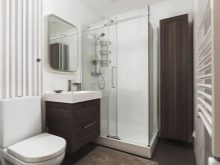
Wash basin It is considered the second most important element of plumbing equipment in homes in terms of functional importance; these days, there are no restrictions on bowls in terms of shape and tint solution. The whole variety of the presented models is divided into 3 groups depending on the method of installation and fixation:
- tulips (also called pedestals);
- furniture cabinets;
- sinks on brackets.
Tulips allow you to effectively hide engineering communications. It is this technique that is usually performed in the “elite” segment.
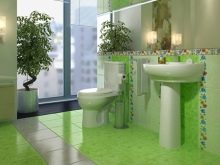

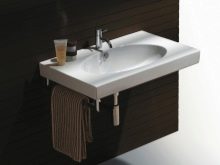
To mask pipes, you can use furniture cabinet with drawers. In it, you can always not only hide communications, but also store bath accessories. Bracket models are traditionally used in small bathrooms.

Materials (edit)
The most popular materials for the production of sanitary ware for many years have been sanitary porcelain and faience. Their popularity is due to their durability, aesthetic appearance and affordable price. Despite the noticeable visual similarity between these materials, they have significant differences.
- Faience looks impressive, while it weighs little and is inexpensive. At the same time, due to the porous surface of the faience, dirt and water sediment are quickly absorbed into the material, so it is quite difficult to remove stains; over time, washbasins and toilets made of this material lose their aesthetic appearance.
- The coating of porcelain structures is smoother, therefore, dirt simply does not stick to them, respectively, it is much easier and easier to take care of such equipment for bathrooms. However, the porcelain technique is heavier and more expensive. Both materials have one drawback - even on strong high-quality products, cracks and chips remain from mechanical damage from heavy objects.
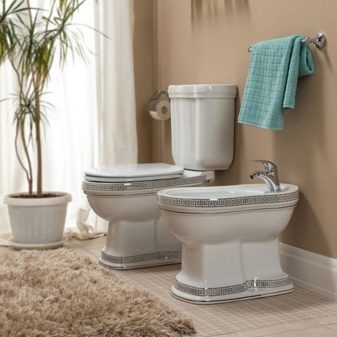

In the manufacture of equipment for bathrooms, some other materials are also used.
- Composite. Such plumbing has many advantages: it is not afraid of mechanical shock, the effects of acidic and alkaline solutions. Composite versions are easy to operate, their smooth surface is easy to clean. The material has a smooth glossy surface and therefore always looks flawless. Composite sanitary ware has only one drawback - a rather high cost.


- Marble. This plumbing fixture is strong, durable and practical. It looks really luxurious, which is why it is not cheap. But the high cost is not the only minus of marble, the surface of this stone is porous, therefore, a plaque appears on it very quickly, which is not easy to clean.
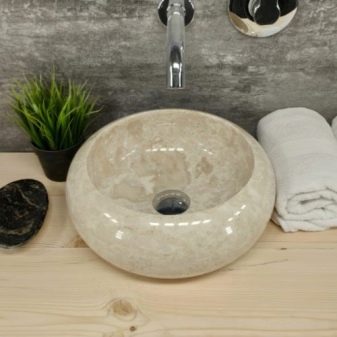

- Glass. Plumbing equipment made from this material has come into fashion relatively recently and today it successfully competes with traditional porcelain and budget faience, while absolutely not inferior to them in strength. The only drawback of such equipment is the laboriousness of caring for it, even the smallest stains, splashes and streaks on this material are not just visible - they literally catch the eye, so a glass sink will have to be washed and wiped dry every day.


- Cast iron. The material is considered a classic of plumbing equipment, the alloy has high strength parameters and retains heat well.The water in such a bath cools down for a very long time, thereby the user gets the opportunity to take a bath for a long time and at the same time saves on water consumption. Of the minuses of cast iron equipment, a limited range of models can be identified, as well as massiveness. In addition, the formation of chips and cracks on the surface is not excluded.
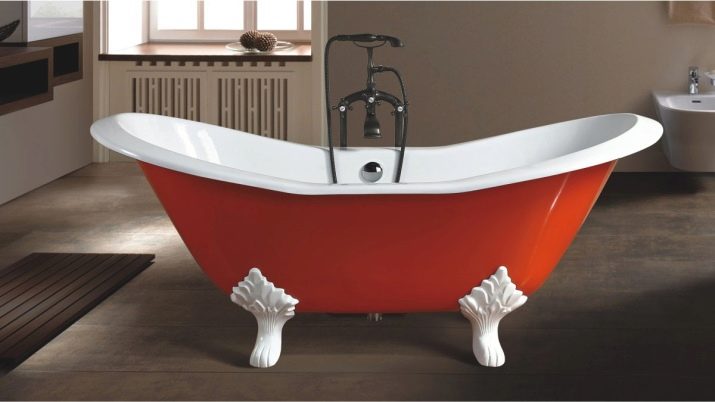
- Steel. This is the cheapest and lightest material for the production of sanitary ware, most often used for the manufacture of washbasins and bathtubs. But the disadvantages are significant: steel retains heat very poorly, it immediately heats up and cools down just as quickly, material without a special coating quickly loses its aesthetic appearance, and under the weight of a large user it can bend.


- Acrylic. One of the most modern materials for the production of sanitary ware, it retains heat well, is lightweight and is inexpensive. However, there were some drawbacks: acrylic plumbing must be cleaned with special means, since this material is highly sensitive to any abrasives.

Manufacturers overview
The main question that many users ask when selecting plumbing fixtures is: choose domestic or imported equipment? There is no definite answer to this question. Contrary to popular belief, Russian manufacturers know how to make bathroom fixtures of fairly high quality. Moreover, even a professional is not always able to determine by eye whether this or that plumbing fixture is made by a well-known company or is an imitation.
Of course, if financial opportunities allow, it is better to give preference to well-known firms that have proven themselves in the market. Such equipment is more expensive, but the quality of plumbing will be much higher.


Popular plumbing manufacturers ranked among the best.
- Weltwasser. A German manufacturer that has been producing luxury plumbing fixtures since 2005. All products are reliable, practical and aesthetic - these are the qualities that have made the brand one of the leaders in the plumbing fixtures market in just a few years.


- Oras. Another German company founded in 1998. A distinctive feature of the equipment is the use of special sanitary ware obtained by the method of high-temperature firing. Many models have a set of additional functions, for example, electronic toilets with the possibility of heating the rim, drying with a hairdryer and deodorization are in demand.

- Laufen. It is a brand from Switzerland and has been manufacturing sanitary ware for over 125 years. All products of the brand are distinguished by creative design - here you can find wavy washbasins and semicircular toilets.
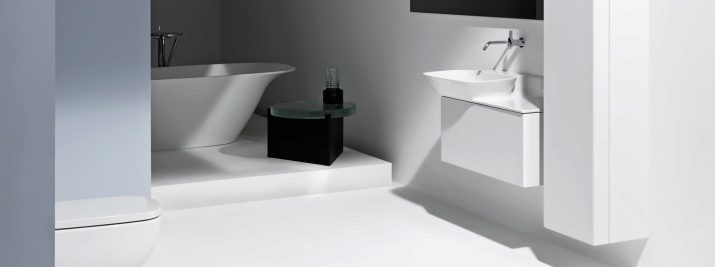
- Roca. One of the most popular brands among our compatriots. The production was opened back in 1917, and today the company is a recognized European leader. Buyers are attracted by the availability of a wide variety of equipment, among which you can choose steel, cast iron or acrylic models.


- BelBagno. An Italian brand, all products of which are of exceptionally high quality and long service life. The manufacturer's warranty for ceramic products is 25 years, for acrylic products - 10 years.

- Plumbing is very popular among our compatriots. Ikea. The manufacturer offers products of various shapes and sizes. You can choose the right model for any style.

How to choose?
When choosing plumbing, you must adhere to the basic rule: it must be harmoniously combined with each other, and this applies not only to the tint palette, but also the materials used and the general design style. The size and configuration of plumbing equipment dictates the footage of the room, and the style can be chosen depending on your personal preferences.
When choosing plumbing, keep in mind that, for example, white color scheme has 16 shades, therefore white plumbing from different manufacturers may differ in color - that is why it is advisable to opt for the equipment of the same brand.



Special attention should be paid to the completeness and integrity of the coating.
There are subtleties when choosing each type of equipment. So, when choosing washbasins, you should pay attention to the possibility of protection against overflow of water. When choosing toilets, consider the drainage system. Since water meters are installed in most private housing buildings and apartments these days, toilets with incomplete drain are in great demand; in such models, the flush button is usually divided in two.


Explore all engineering outputsfor example, a toilet flush pipe is either straight or at a slight angle to the floor surface.
If you make the wrong choice, you will have to adjust the existing communications to the technical capabilities of the equipment. These works will take time and additional costs.

When buying bathroom bowls and shower stalls, proceed from the dimensions of the room: if the bathroom is small, pay special attention to corner bathtubs and shower cubicles, such designs will help you significantly save usable space.
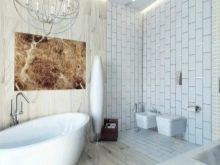

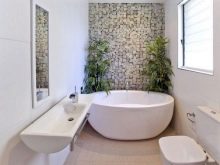
In recent years, along with expensive models from leading manufacturers from Western countries, there are also quite budget versions of Chinese production on the market. There is an opinion that the Chinese technique is certainly impractical - this is far from the case, Nowadays, the Chinese are able to follow the needs of the market and take into account the wishes of users regarding not only the price, but also the quality of the products.

Placement rules
When placing plumbing in the bathroom, you should first of all be guided by the requirements of the ergonomics of the space. There are typical accommodation options and standards for average bathrooms.
- The bathtub is usually installed in such a way that the side is 60 cm above the floor level, the mixer is mounted 20-30 cm above it, and it is better to place the shower head at a height of 220-240 cm.
- Distance from the edge of the sink to the floor should be within 80-85 cm.
- The suspended toilet is fixed at a height of 40-43 cm (for floor models, the height is already adjusted to the standard), while at least 25-30 cm should remain from its axis to the wall.
- In front of the sink, bathtub and toilet be sure to provide 60-80 cm of free space.



Examples in the interior
In conclusion, we offer you a small selection of the most stylish bathrooms.
Consistently luxurious looks classic white plumbing.


In recent years, colored motifs are in fashion: black, red, blue, orange, yellow plumbing fixtures and accessories are in demand among lovers of hi-tech, minimalism and modern styles.



The following video will tell you how to choose plumbing for the bathroom.








